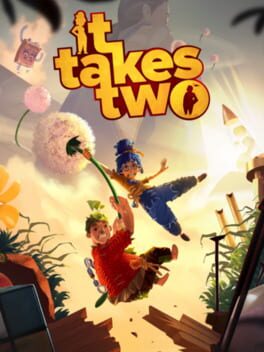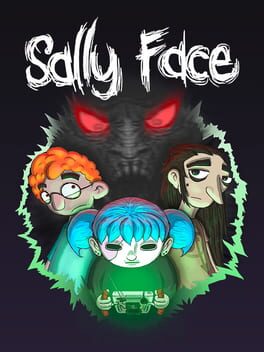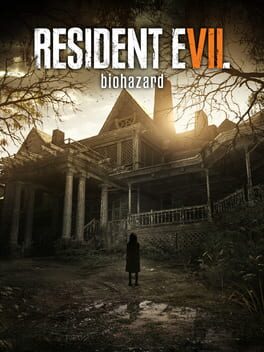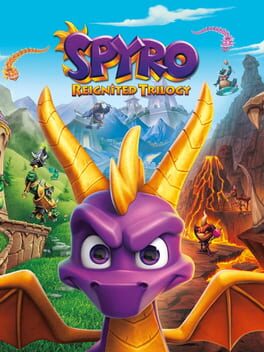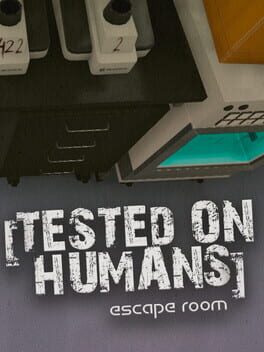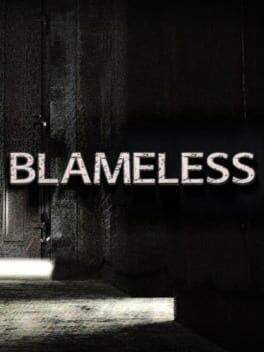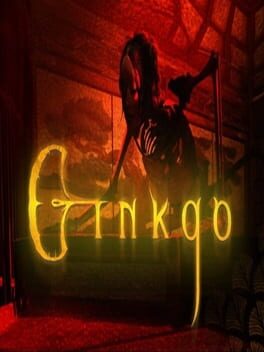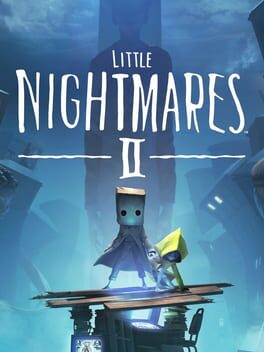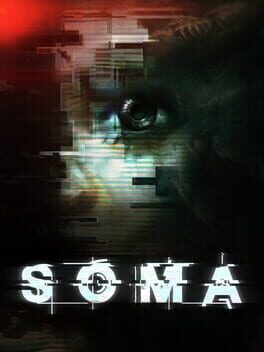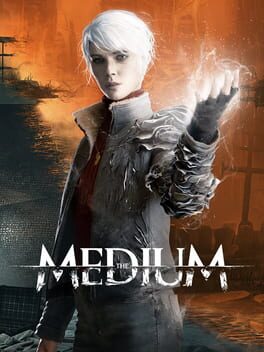ResidentRed
2021
Probably the best cooperative game I’ve ever played, It Takes Two was built specifically with split-screen in mind. It excelled in crafting a fantastical journey, complete with smooth controls, a wildly diverse set of puzzles, and minigames to waste time on. There wasn’t a moment where myself or my co-op partner got bored. It also provided a bit of a lesson on working together, which can end positively or have the opposite effect. Thankfully, we came away with positive feelings.
Too bad the characters and their bickering got a little annoying. Also, Cutie didn't deserve that at all, talk about traumatic.
Too bad the characters and their bickering got a little annoying. Also, Cutie didn't deserve that at all, talk about traumatic.
2016
Sally Face was a gorgeous game to play, with colours that were vibrant one minute, but dark and unnerving the next. Big on narrative, it offered a seemingly endless stream of information about its lore, yet discovering every secret was more than a little irritating at times, my immersion taking hits due to questionable creative choices (such as the game assuming the player discovered everything regardless if they did or not).
Still, there was a lot to like, the characters endearing, and the gameplay varied with distinctive puzzle sequences and minigames. The various monsters and supernatural shenanigans also proved a lot of fun.
Still, there was a lot to like, the characters endearing, and the gameplay varied with distinctive puzzle sequences and minigames. The various monsters and supernatural shenanigans also proved a lot of fun.
2014
The Evil Within is one of those fondly looked back upon games that just didn’t do it for me. It attempted to cram together every horror genre out there—psychological, surrealism, action, survival—all of which are done better in other games. Sure, there were a few memorable sequences, but the constant jumping around resulted in a disjointed experience. Add to that the convoluted way of storytelling, and well, I just wish I had loved it as much as most.
What I did like included certain environments and boss fights. Don’t get me wrong, it looked good, artistically speaking. In the beginning I even enjoyed myself, but it overstayed its welcome and by the end I couldn't help but hate it.
What I did like included certain environments and boss fights. Don’t get me wrong, it looked good, artistically speaking. In the beginning I even enjoyed myself, but it overstayed its welcome and by the end I couldn't help but hate it.
Survival horror at its finest, Resident Evil 7 Biohazard was a fresh coat of paint for the franchise. A haunting, oppressive atmosphere that made use of quality sound design, with polished environments that were truly a pleasure to explore. Where it lacked in enemy types, it made up for with memorable boss fights and overall craziness. Seriously the wildest opening hour of any game, and it made me fall in love with the series all over again.
I loved it, through and through. The lack of weapons in the beginning worked in its favour, allowing the player to feel helpless, if only for a limited time. Also, Jack and Marguerite Baker are THE power couple.
I loved it, through and through. The lack of weapons in the beginning worked in its favour, allowing the player to feel helpless, if only for a limited time. Also, Jack and Marguerite Baker are THE power couple.
The original trilogy—Spyro the Dragon, Ripto's Rage and Year of the Dragon—has a special place in my heart. There’s nothing that defines my childhood more, so I was thrilled to re-experience the adventures all over again. Call me biased, but it was an excellent remaster and every bit as magical and addictive. Seeing all the characters and worlds in crisp HD was almost emotional, so I’d definitely recommend it to those that grew up with Spyro.
That isn’t to say that new players wouldn’t enjoy it too. The games are colourful, charming, and offer hours of entertainment.
That isn’t to say that new players wouldn’t enjoy it too. The games are colourful, charming, and offer hours of entertainment.
Tested on Humans: Escape Room offered puzzles that only became more numerous and complex, their solutions assisted by clues found around the environment, as well as some thinking on the player’s part. They had variation—logic, numbers, patterns—and more of the map opened up with progress, each room bringing further mystery to the rather bare-bones story. It was relaxing despite the attempt at a creepy atmosphere, with no time constraints or sense of danger.
There was more than one occasion I got stuck, and that’s a good thing; the point of games like this is to be challenged. What I outright didn’t like was the poor narrative and its conclusion.
There was more than one occasion I got stuck, and that’s a good thing; the point of games like this is to be challenged. What I outright didn’t like was the poor narrative and its conclusion.
2019
A 2D sidescroller, Mr. Hopp’s Playhouse was a fun, if somewhat frustrating little game. Gameplay was as simple as it could get, the aim to avoid the titular Mr. Hopp by staying out of sight and jumping over toys so as to not make noise and alert him. Objects were scattered throughout the environment and were necessary to escape. There were also several Easter eggs, as well as more than one ending.
Patience really was key, as I learned. A lullaby was used to denote the whereabouts of Mr. Hopp, but it could be awkward. Still, I enjoyed it overall, the cat and mouse chase able to get the heart rate going. What else could I ask for in a free product?
Patience really was key, as I learned. A lullaby was used to denote the whereabouts of Mr. Hopp, but it could be awkward. Still, I enjoyed it overall, the cat and mouse chase able to get the heart rate going. What else could I ask for in a free product?
2016
Blameless relied on its atmosphere to build tension, its investigative gameplay involving finding and using objects in specific ways to open up more of the environment. With that, it offered a mystery to solve with voice acting from the protagonist. I liked it for what it was, and even felt a little creeped out as I explored the map—I’ve always appreciated more subtle forms of horror compared to deafening jump scares.
While there were a couple of ways to reach its conclusion, the ending didn’t change; a minor criticism taking into account how small of a project it was. It can be completed in an hour or less, and is completely free.
While there were a couple of ways to reach its conclusion, the ending didn’t change; a minor criticism taking into account how small of a project it was. It can be completed in an hour or less, and is completely free.
2020
A student project that’s free to play, Ginkgo was inspired by East Asian horror and implemented a unique mechanic of sewing together pieces of the environment in order to progress through its surreal surroundings. It also included a couple of tense chase sequences with a monster. Story-wise, it was somewhat confusing, but at least it tried to form a narrative.
Visually it looked good, but it didn’t exactly play well a lot of the time as bugs were present, especially with its main gimmick. Nevertheless, it was decent for a 20-30 minute experience. Described as a demo, it’s unknown if it’s a part of a larger project.
Visually it looked good, but it didn’t exactly play well a lot of the time as bugs were present, especially with its main gimmick. Nevertheless, it was decent for a 20-30 minute experience. Described as a demo, it’s unknown if it’s a part of a larger project.
2021
A sequel that successfully captured the same dreary and hopeless atmosphere that made the previous so effective. Even without dialogue I was pulled into the story and made to feel invested. While the platforming and puzzles remained similar—moving and finding objects in order to progress—things certainly amped up following the initial chapter as it introduced new environments and monsters.
The only thing I didn’t completely gel with was the combat as it relied on timing that could prove frustrating if off by a small margin. Diverse game mechanics aren't a bad thing, but Little Nightmares tended to be tricky already due to its side-view perspective.
The only thing I didn’t completely gel with was the combat as it relied on timing that could prove frustrating if off by a small margin. Diverse game mechanics aren't a bad thing, but Little Nightmares tended to be tricky already due to its side-view perspective.
2015
SOMA told a phenomenal story about consciousness, identity, and preservation. Sure, I've come across the existential crisis of what makes us human a number of times in horror and science fiction alike, but it was done so damn well here, each new revelation drip-fed over time.
Stealth was necessary for getting past the game’s monsters, with each type having their own detection quirk depending on location, either relying on sight, sound, or movement. There was a balance between struggling to stay alive against the assortment of enemies and the quiet moments where the atmosphere seeped into my bones. I’ll recommend this game for years to come.
Stealth was necessary for getting past the game’s monsters, with each type having their own detection quirk depending on location, either relying on sight, sound, or movement. There was a balance between struggling to stay alive against the assortment of enemies and the quiet moments where the atmosphere seeped into my bones. I’ll recommend this game for years to come.
2021
While it may have been hyped as a spiritual successor to the Silent Hill franchise, it’s not and should stand on its own merits. From my point of view, it was a decently made horror game that tried its best to capture the classic horror experience, and regardless if it succeeded or not, it’s still my favourite Bloober title to date. Life was brought to the character of Marianne, and I appreciated the cinematic quality that remained a constant throughout.
That said, the story itself was where things got complicated. When it comes to being deep and tackling sensitive subjects, it can either come across as respectful or the polar opposite, and I feel The Medium verged on the latter.
That said, the story itself was where things got complicated. When it comes to being deep and tackling sensitive subjects, it can either come across as respectful or the polar opposite, and I feel The Medium verged on the latter.
